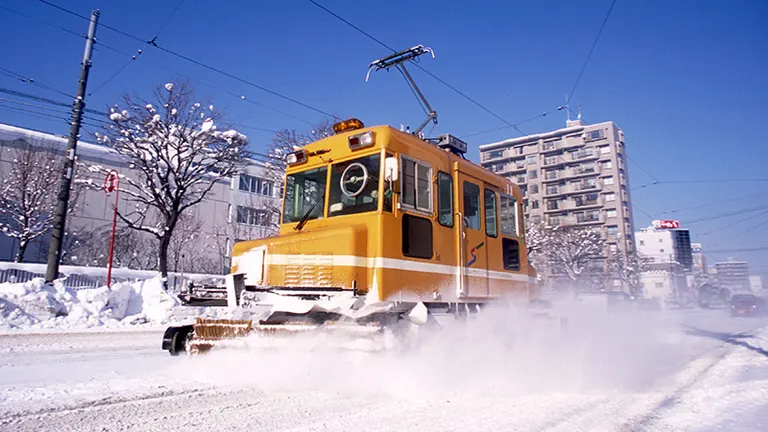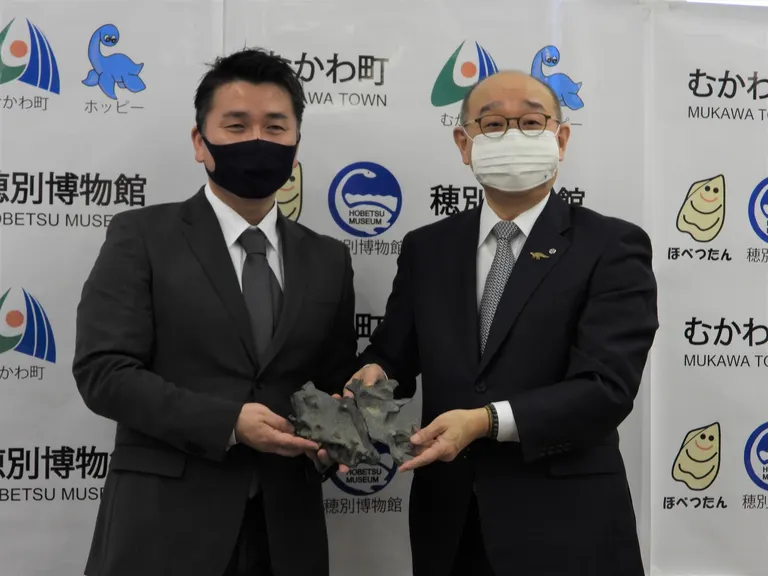
ARTICLES
A new dinosaur species discovered in Mukawa, Hokkaido? A new discovery that may "surpass" Kamuysaurus
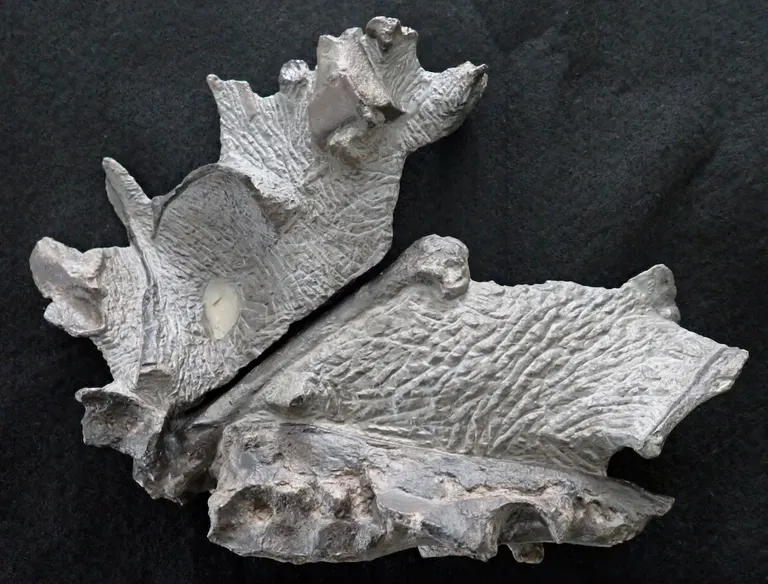
A replica of the dinosaur fossil newly discovered in Hobetsu, Mukawa Town (provided by Hobetsu Museum)
Another great dinosaur discovery in Hobetsu, Mukawa Town!?
Just one month ago, on January 6, 2021, news broke that a new theropod dinosaur fossil had been discovered in Hobetsu, Mukawa Town. The press conference was held by a research group led by Professor Yoshitsugu Kobayashi, a world-renowned dinosaur scientist at Hokkaido University who is affectionately known as "Dinosaur Kobayashi." According to Professor Kobayashi, the fossil that had been sleeping in the Hobetsu Museum's storage room was a dinosaur, and this may be an even bigger discovery than the "Mukawa Dragon," or Kamuysaurus! But what exactly is this fossil? Why is it so amazing? I'm sure there are many people who have no idea what it is. So this time, I would like to explain the message hidden in this fossil.

Professor Kobayashi (left) and Mayor Takenaka Yoshiyuki (right) at the press conference
The new common knowledge that birds are dinosaurs
When you hear the word dinosaur, what comes to mind? A terrifying dragon, as the name suggests... A monster that became the prototype for Godzilla and other monsters... But in fact, these are images of dinosaurs from a generation ago. Dinosaur restorations have undergone a major transformation. First, let's define "modern dinosaurs." Going back to the 1960s, when hippie culture was sweeping America, a new wind blew among dinosaur researchers. This was the emergence of the revolutionary theory that "dinosaurs may have evolved into birds." This phenomenon was later called the "Dinosaur Renaissance," and it completely overturned our concept of dinosaurs. In the late 1990s, various "feathered dinosaur" fossils were discovered one after another, mainly in China, proving that dinosaurs evolved into birds (see figure below).

A diagram of a fossil of Microraptor gui, showing that it had flight feathers on its limbs. (Illustration by Ryo Suzuki)
After that, more and more fossils were found that were on the border between dinosaurs and birds, and it became impossible to distinguish between the two. Eventually, the definition of "dinosaur" changed and "birds" became included in "dinosaurs"! In other words, birds are part of the dinosaurs. In other words, according to the latest definition, the pigeons sunbathing in the neighborhood park yesterday are "dinosaurs," and so are the crows pecking at trash in the alleyway... In other words, dinosaurs are neither extinct nor slow monsters. Considering that there are about 9,000 species of birds and 6,000 species of mammals in modern times, and that the sky is made up of birds, it is no exaggeration to say that the dinosaur age is still continuing today.
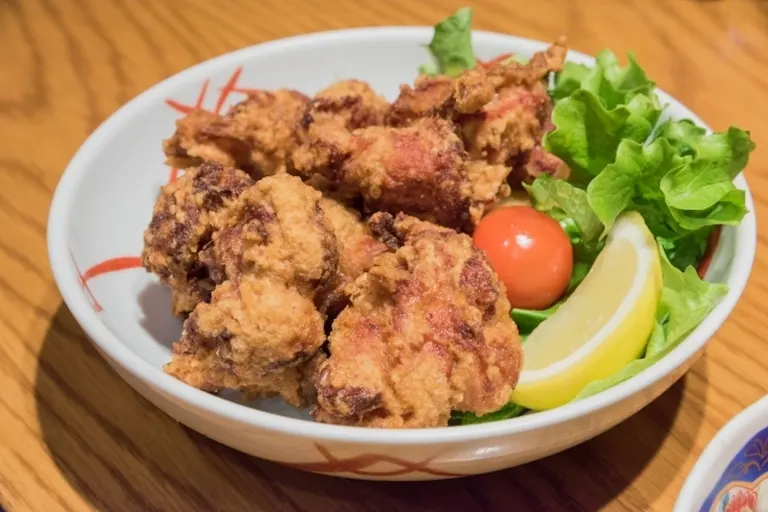
Hokkaido soul food, Zangi, is also made from "dinosaur meat"
About this discovery
There are two important points to note about this discovery. First of all, the newly confirmed fossil in Mukawa Town's Hobetsu is a group of dinosaurs called "Theropods." Theropods are a group of bipedal carnivorous/omnivorous dinosaurs, including the famous Tyrannosaurus. On the other hand, some theropods evolved into birds. The fossil discovered this time is of a small theropod, and the stratum in which it was found is from the relatively recent Cretaceous period, which is the latter half of the dinosaur era, so it is possible that it is a dinosaur close to a bird. Furthermore, since there are few dinosaur fossils in Japan and this theropod may be a new species, it may bring about new discoveries in the evolutionary history of dinosaurs and birds! However, research is still in progress. It has not been announced what specifically led to the evolution of birds. That is still to be seen.
Splitting Hokkaido in two! What is the stratum in which this fossil was discovered?
By the way, both the newly discovered theropod and the "Mukawa Dragon" or Kamuysaurus, whose entire skeleton was found, were found in a Hokkaido stratum called the "Ezo Group." What's interesting is that the Ezo Group is a stratum made of the sea (technically called a marine layer). This Ezo Group runs south from Wakkanai, vertically dividing Hokkaido in two. Mikasa City and Nakagawa Town are famous for the large number of ammonites found there, because the Ezo Group is a "marine layer."
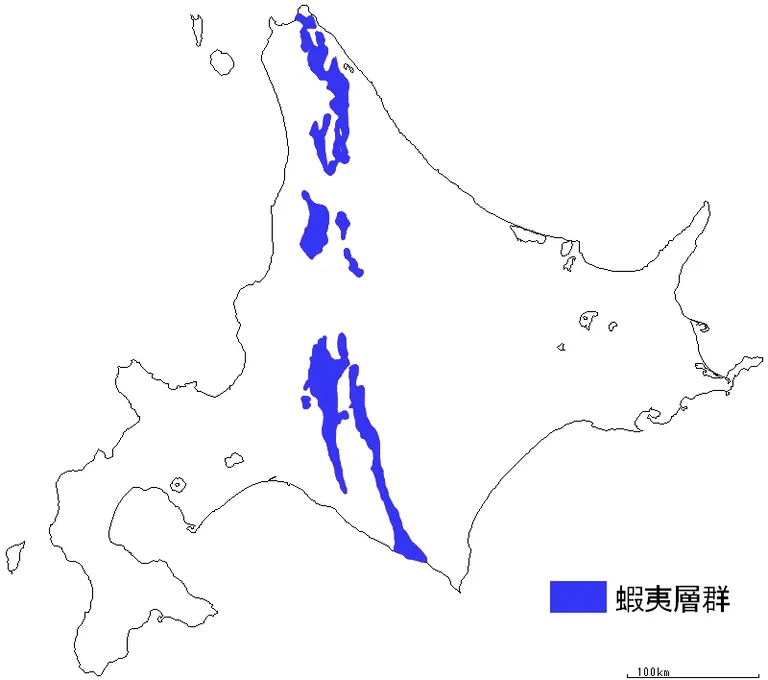
Distribution map of the Yezo Group (Map created by Ryo Suzuki)

Ammonites found in the Ezo Group
The Ezo Group dates back to the Middle to Late Cretaceous Period (which includes the time when Tyrannosaurus and Triceratops were alive), between 100 million and 66 million years ago. At the time, Hokkaido was at the bottom of the ocean, but dinosaurs roamed the nearby continent. Incidentally, it is thought that after Kamuysaurus died, gas accumulated in its stomach, causing it to float in the ocean from the continent to Hokkaido and be deposited on the seabed (see diagram below). How did this theropod end up on the bottom of the ocean, so far from land, after it died? This is an area to look out for in future research results!

Illustration of Kamuysaurus being washed from land into the sea ① Living on the coast ② Washed away by floods, etc. ③ Accumulated on the seabed (Illustration by Ryo Suzuki)
This new dinosaur discovery opens up new research perspectives from a different angle than the complete skeleton of Kamuysaurus, that of elucidating the evolution of birds. Let's look forward to future research announcements!






